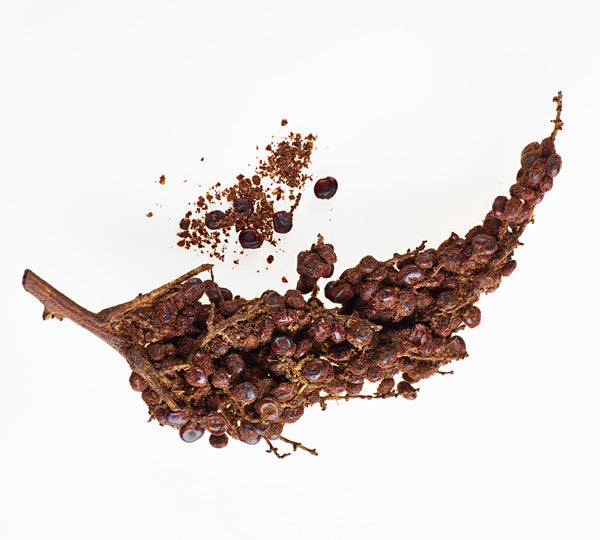
Sumac

Sumac
(RHUS CORIARIA)
An astringent, sour spice made from the red berries of a nonpoisonous plant
Sumac is often thought of as poisonous in the United States because we have a native variety here that is inedible, however, it is not dangerous. The kind we use to season is very much edible, safe, and delicious.
Sumac is a mainstay in Middle Eastern cuisine. In Iran and Turkey, it is rubbed on kebabs and stirred into rice dishes for a touch of acidity and color. It garnishes dishes like hummus and tahini and seasons grilled fish in Syria.
Flavor & Aroma
You can think of sumac as sort of a lemon powder or dry vinegar. It's an acidic, versatile ingredient, used to brighten up food. Unlike lemon juice, sumac's flavor holds well even when it's heated. Along with an acidic flavor and aroma, sumac has a floral element to it with a dry, slightly tannic finish. It's great on raw dishes, meats and fish, and of course, as one of the main ingredients in Za'atar.
Something interesting to note is that people oftentimes overemphasize the importance of sumac's color, assuming that it should be deep burgundy every time. However, not every season produces the same color sumac, yet the taste and scent remain the same regardless. A lot of the sumac on the market includes beet powder because of this, and sometimes it even includes salt. We source our sumac without additives from a trusted supplier in Turkey.
Origin
Native to the Mediterranean (Italy and Sicily), the Middle East (Iran), and parts of Asia. Cultivated and growing wild in the mountains of Sicily and Italy, as well as parts of Western Asia.
Harvest Season
In the fall, white flowers give way to small, rust-colored berries that grow into clusters of drupes called sumac bobs. They are harvested before they ripen and dried in the sun, then ground or left whole for seasoning needs.
Usage Ideas
1. Season mascarpone cheese with ground sumac, honey, and olive oil and serve with waffles and fresh figs for breakfast.
2. Stir ground sumac into simmering water with sliced strawberries and thyme sprigs and serve chilled as a refreshing beverage.
3. Sprinkle steamed green beans with ground sumac and finish with olive oil and coarse sea salt.
Other Pairings
Shallot vinaigrette • Crab and watermelon salad • Roasted artichokes • Shepherd's pie • Pear sorbet • Fattoush • Za'atar


